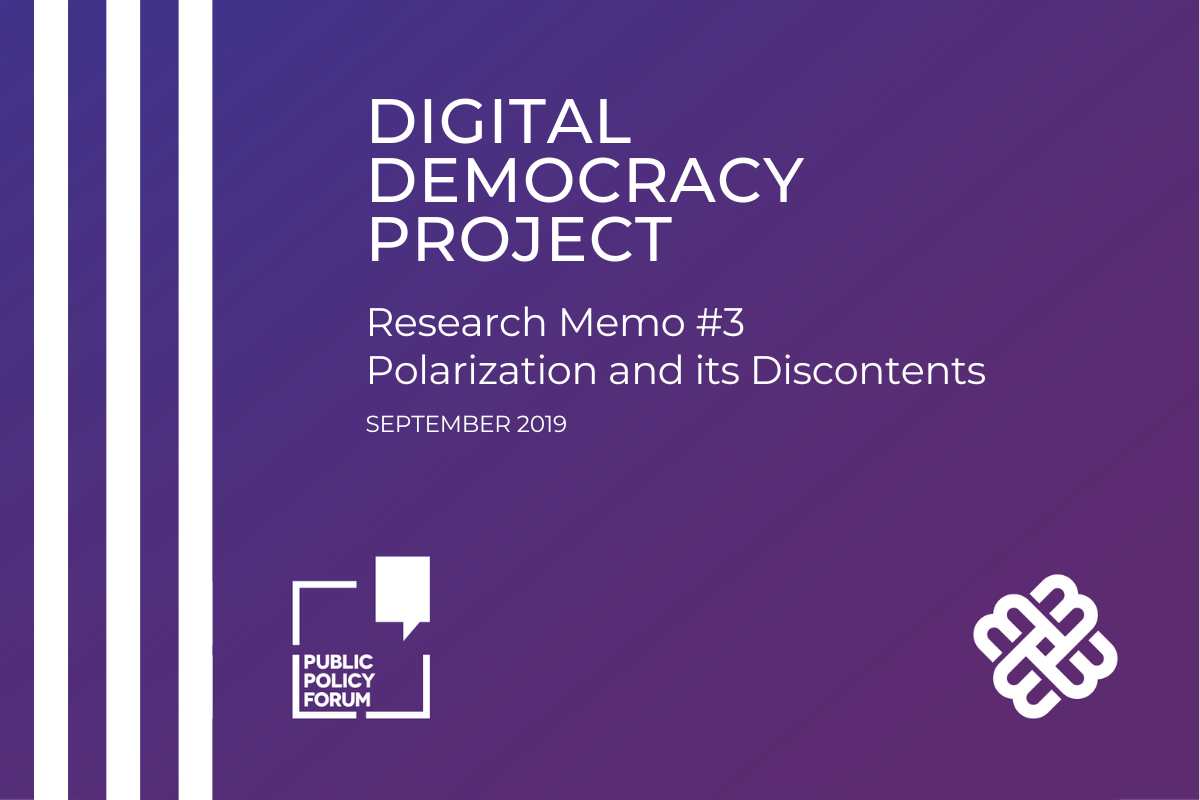Research Memo #3: Polarization and its Discontents
Taylor Owen, Peter Loewen, Derek Ruths, Aengus Bridgman, Robert Gorwa, Stephanie MacLellan, Eric Merkley, Andrew Potter, Beata Skazinetsky & Oleg Zhilin
August 2019
Executive Summary
Researchers, pundits and armchair analysts have argued for some time now that Canada is becoming more like the United States when it comes to polarization—typically understood as the segmenting of society into increasingly isolated and mutually incomprehensible political tribes. It is also common to see at least some of the blame for polarization placed on the media, where increasingly partisan social media echo chambers amplify disagreement and distort the public conversation.
Yet while there is some evidence that Canadians are polarized, according to our data, the story is a bit more complicated than is often assumed. In particular, the usual narrative of social media-based echo chambers driving real-world polarization is not supported by our survey and online data. Yes, some small subset of Twitter users tend to create online echo chambers, but our survey findings suggest that the offline impact is very limited.
Ultimately, the biggest driver of polarization seems to be ideology and partisanship themselves. As our political parties have become more ideologically distinct, their strongest partisans have tended to feel more distant from each other. This echoes one of our findings from our first research memo: it is the media consumers with strong partisan tendencies who are more likely to become misinformed with news exposure, especially via social media.
KEY FINDINGS
We find evidence of affective polarization—dislike of parties or their supporters on the other end of the political spectrum simply because they belong to an opposing group—among the Canadian public.
Twitter users of all partisan stripes tend to create their own polarized spaces online. They are more likely to follow only candidates from their own party than others.
Media sources that draw a highly partisan audience are only viewed by a small percentage of Canadians who share those partisan leanings. What makes someone more likely to consume these news sources is not how partisan they are, but how much time they spend on social media.
However, polarization does not appear to be linked to media consumption—either for traditional media, social media, or media sources that are preferred by mostly left-leaning or right-leaning supporters.
This is the third report from the Digital Democracy Project, a partnership between the Public Policy Forum and the Max Bell School of Public Policy at McGill University. The project uses data from both public opinion polling and online media analysis to examine the media habits of the broader Canadian public as well as the political and journalistic class, with an eye to understanding the various relationships between media use, partisanship, political knowledge, and concern over policy issues.

